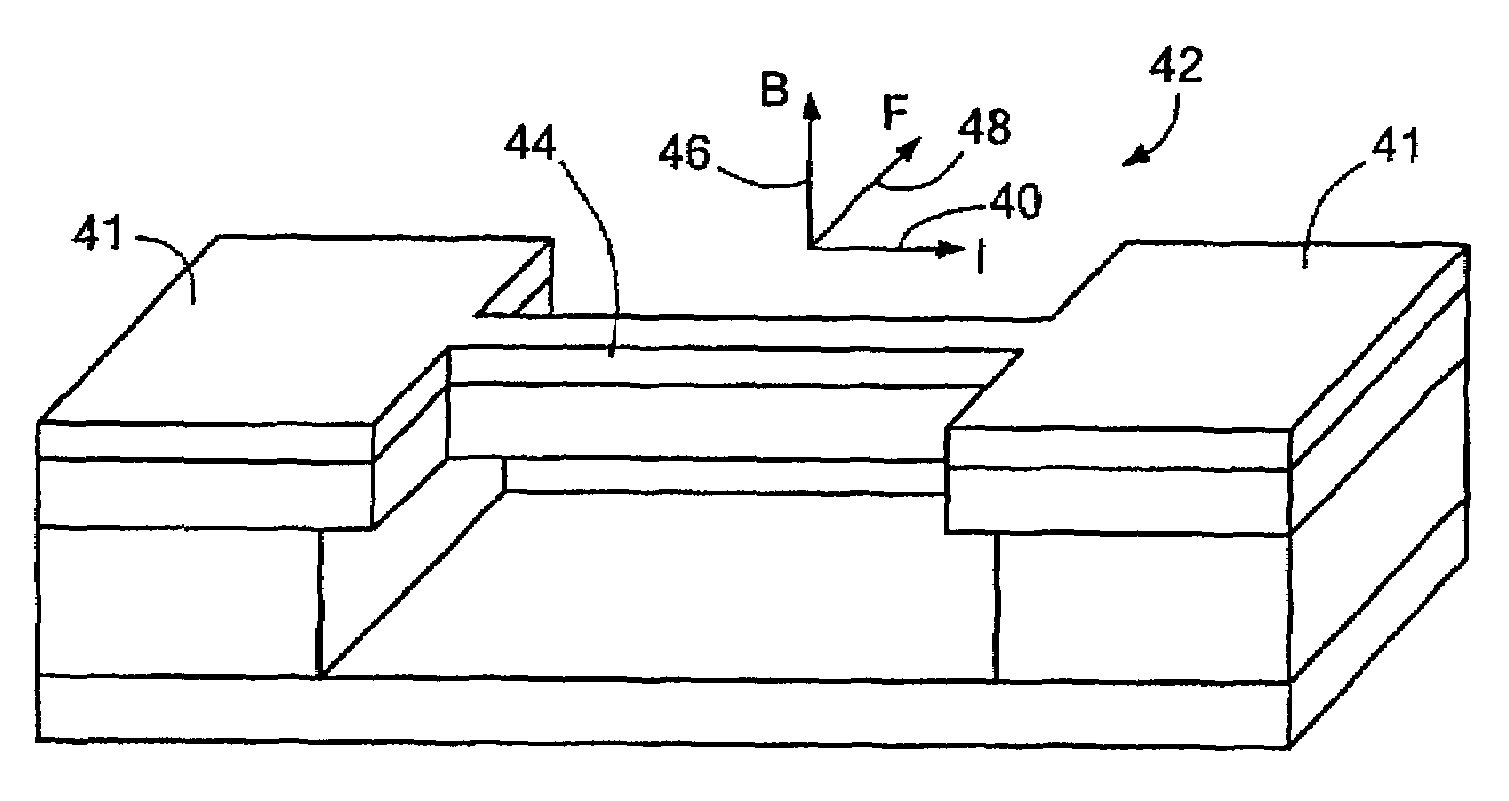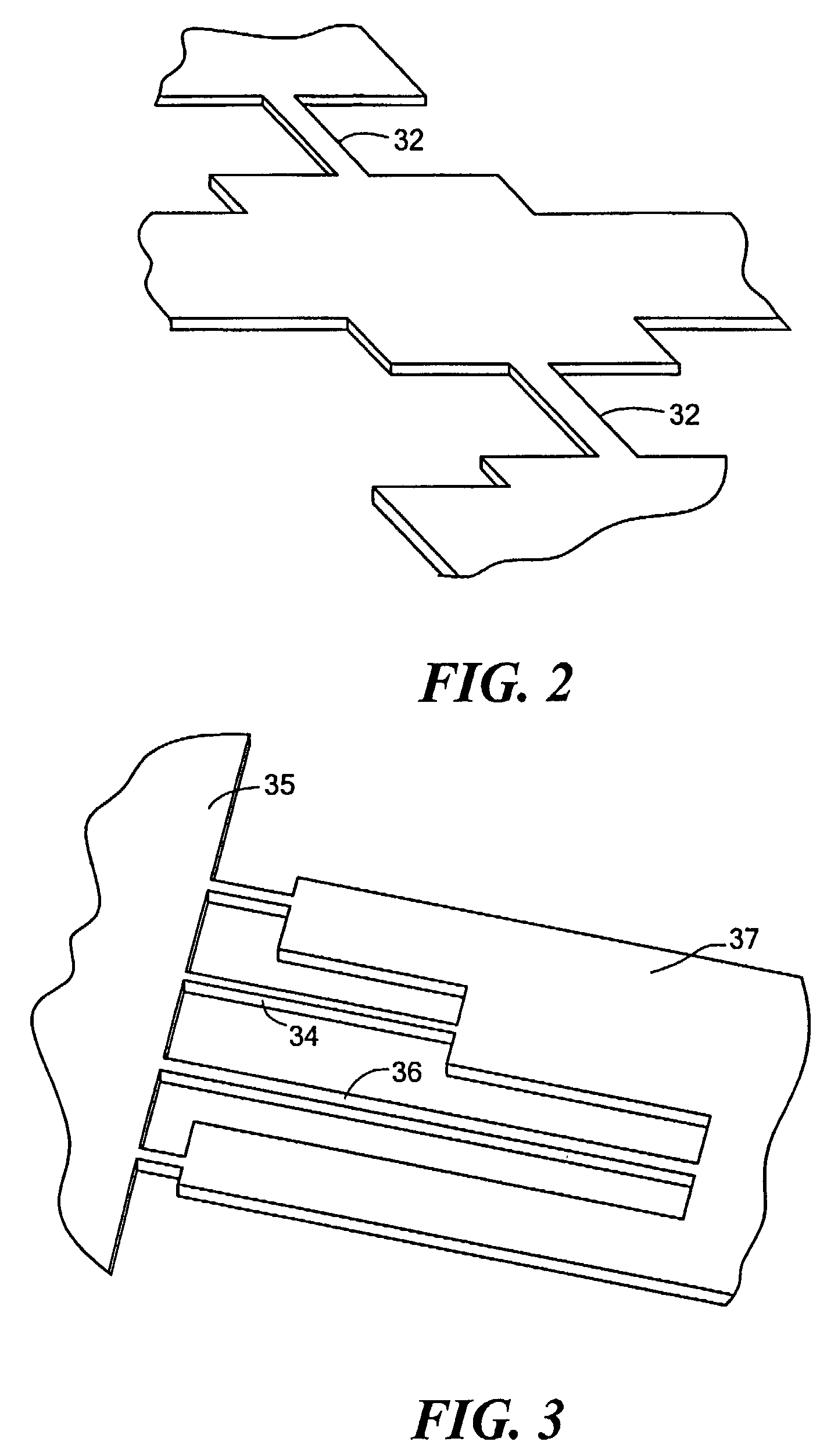Controllable nanomechanical memory element
a technology of nanomechanical elements and memory elements, applied in static storage, digital storage, instruments, etc., can solve the problems of reducing the power and typically faster devices produced, the transistor elements used in processors face serious obstacles, and the advances will not go on indefinitely, so as to reduce the size of practical elements, increase the density of memory elements, and reduce device power.
- Summary
- Abstract
- Description
- Claims
- Application Information
AI Technical Summary
Benefits of technology
Problems solved by technology
Method used
Image
Examples
Embodiment Construction
[0055]Referring now to FIGS. 1(a)-1(f), a sequence of fabrication steps for a doubly clamped suspended beam 30 are illustrated. The device is produced with conventional semiconductor fabrication methods beginning with a multilayer structure in FIG. 1(a). The beam pattern is created with lithography techniques in FIG. 1(b), and metalized in FIG. 1(c). FIG. 1(d) illustrates the masking and removal of excess metal and patterning material. FIGS. 1(e) and 1(f) show the removal of material to free beam 30 through anisotropic reactive ion etching (RIE) and isotropic RIE, respectively. Alternatively, it is possible to use a wet etch method for both anisotropic and isotropic etching steps, or any combination of wet etch and RIE. FIG. 2 illustrates a pair of doubly clamped beams 32 that may be formed according to the process illustrated in FIGS. 1(a)-1(f). The two identical individually addressed doubly clamped beams 32 are approximately 8 μm long×300 nm wide×200 nm thick in this exemplary em...
PUM
 Login to View More
Login to View More Abstract
Description
Claims
Application Information
 Login to View More
Login to View More - R&D
- Intellectual Property
- Life Sciences
- Materials
- Tech Scout
- Unparalleled Data Quality
- Higher Quality Content
- 60% Fewer Hallucinations
Browse by: Latest US Patents, China's latest patents, Technical Efficacy Thesaurus, Application Domain, Technology Topic, Popular Technical Reports.
© 2025 PatSnap. All rights reserved.Legal|Privacy policy|Modern Slavery Act Transparency Statement|Sitemap|About US| Contact US: help@patsnap.com



